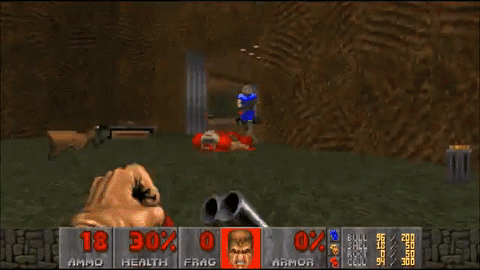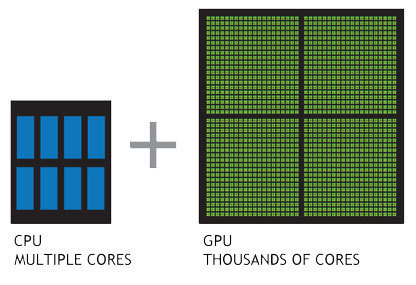DEEP LEARNING 101
Andrew Beam, PhD
Postdoctoral Fellow
Department of Biomedical Informatics
Harvard Medical School
February 24th, 2017

twitter: @AndrewLBeam
GOAL OF THIS TALK


THIS TALK IS A MULTIMEDIA EXPERIENCE
Deep Learning 101 companion series of blog posts:
http://beamandrew.github.io
Jupyter Notebooks:
https://github.com/beamandrew/deeplearning_101

DEEP LEARNING HAS MASTERED GO





DEEP LEARNING CAN PLAY VIDEO GAMES



DEEP LEARNING CAN PLAY VIDEO GAMES


DEEP LEARNING CAN PLAY VIDEO GAMES


DEEP LEARNING CAN PLAY VIDEO GAMES


DEEP LEARNING CAN IMITATE STYLE


EVERYONE IS USING DEEP LEARNING



WHAT IS A NEURAL NET?

NEURAL NETWORKS ARE AN OLD IDEA

One of the very first ideas in machine learning and artificial intelligence
- Date back to 1940s
- Many cycles of boom and bust
- Repeated promises of "true AI" that were unfulfilled followed by "AI winters"

Are today's neural nets any different than their predecessors?
"[The perceptron is] the embryo of an electronic computer that [the Navy] expects will be able to walk, talk, see, write, reproduce itself and be conscious of its existence." - Frank Rosenblatt, 1958
MILESTONES


IN THE BEGINNING... (1940s-1960s)


Warren McCulloch and Walter Pitts (1943)
Thresholded logic unit with hardcoded weights
Intended to mimic "integrate and fire" model of neurons
IN THE BEGINNING... (1940s-1960s)

Rosenblatt's Perceptron, 1957

- Initially very promising
- Came with provably correct learning algorithm
- Could recognize letters and numbers
THE FIRST AI WINTER (1969)



Minsky and Papert show that the perceptron can't even solve the XOR problem
Kills research on neural nets for the next 15-20 years
THE BACKPROPAGANDISTS EMERGE (1986)


Rumelhart, Hinton, and Willams show us how to train multilayered neural networks

REBRANDING AS 'DEEP LEARNING' (2006)

Unsupervised pre-training of "deep belief nets" allowed for large and deeper models

Image credit: https://www.toptal.com/machine-learning/an-introduction-to-deep-learning-from-perceptrons-to-deep-networks
THE BREAKTHROUGH (2012)

Imagenet Database
- Millions of labeled images
- Objects in images fall into 1 of a possible 1,000 categories
- Relatively high-resolution
- Bounding boxes giving exact location of object - useful for both classification and localization
Large Scale Visual
Recognition Challenge (ILSVRC)
- Annual Imagenet Challenge starting in 2010
- Successor to smaller PASCAL VOC challenge
- Many tracks including classification and localization
- Standardized training and test set. Competitors upload predictions for test set and are automatically scored
THE BREAKTHROUGH (2012)

Pivotal event occurred in an image recognition contest which brought together 3 critical ingredients for the first time:
- Massive amounts of labeled images
- Training with GPUs
- Methodological innovations that enabled training deeper networks while minimizing overfitting
THE BREAKTHROUGH (2012)

In 2011, a misclassification rate of 25% was near state of the art on ILSVRC
In 2012, Geoff Hinton and two graduate students, Alex Krizhevsky and Ilya Sutskever, entered ILSVRC with one of the first deep neural networks trained on GPUs, now known as "Alexnet"
Result: An error rate of 16%, nearly half what the second place entry was able to achieve.
The computer vision world immediately took notice
THE ILSVRC AFTERMATH (2012-2014)


Alexnet paper has ~ 10,000 citations since being published in 2012!
NETS KEEP GETTING DEEPER (2012-2016)


WHAT'S CHANGED? WHY NOW?
Several key advancements has enabled the modern deep learning revolution

WHAT'S CHANGED? WHY NOW?
Several key advancements have enabled the modern deep learning revolution

Availability of massive datasets
with high-quality labels
Standardized benchmarks of progress and open source tools
Community acknowledgment that
open data -> everyone gets better

WHAT'S CHANGED? WHY NOW?
Several key advancements have enabled the modern deep learning revolution
Advent of massively parallel computing by GPUs. Enabled training of huge neural nets on extremely large datasets




WHAT'S CHANGED? WHY NOW?
Several key advancements have enabled the modern deep learning revolution
Methodological advancements have made deeper networks easier to train

Architecture

Optimizers

Activation Functions

WHAT'S CHANGED? WHY NOW?
Several key advancements have enabled the modern deep learning revolution
Robust frameworks and abstractions make iteration faster and less error prone
Automatic differentiation allows easy prototyping





WHAT'S CHANGED? WHY NOW?
This all leads to the following hypothesis
Deep Learning Hypothesis: The success of deep learning is largely a success of engineering.

Personal belief: Things are different with neural nets this time around
WHAT'S CHANGED? WHY NOW?
Fitting Analogy?



WHAT'S CHANGED? WHY NOW?
These advancements have been transferred to other fields





Doctors were crucial... in creating the labeled dataset!
WHAT'S CHANGED? WHY NOW?
These advancements have been transferred to other fields



Off the shelf, pre-trained deep neural network + 130,000 images = expert level diagnostic accuracy
WHAT'S CHANGED? WHY NOW?
Not just medicine, but genomics too


More here: https://github.com/gokceneraslan/awesome-deepbio
HOW CAN YOU STAY CURRENT?
The field moves fast, staying up to date can be challenging


http://beamandrew.github.io/deeplearning/2017/02/23/deep_learning_101_part1.html
DEEP LEARNING AND YOU
Barrier to entry for deep learning is actually low

... but a few things might stand in your way:
- Need to make sure your problem is a good fit
- Lots of labeled data and appropriate signal/noise ratio
- Access to GPUs
- Must "speak the language"
- Many design choices and hyper parameter selections
- Know how to "babysit" the model during learning phase
Introduction to Deep Learning Models

MULTILAYER PERCEPTRONS (MLPs)

- Most generic form of a neural net is the "multilayer perceptron"
- Input undergoes a series of nonlinear transformation before a final classification layer

MULTILAYER PERCEPTRONS (MLPs)

- MLPs are the easiest entry point to understand what's going on in a deep learning model
- Closely related to logistic regression

LOGISTIC REGRESSION REFRESHER

Pretend we just have two variables:
... and a class label:
LOGISTIC REGRESSION REFRESHER

Pretend we just have two variables:
... and a class label:
... we construct a function to predict y from x:
LOGISTIC REGRESSION REFRESHER

Pretend we just have two variables:
... and a class label:
... we construct a function to predict y from x:
... and turn this into a probability using the logistic function:
LOGISTIC REGRESSION REFRESHER

Pretend we just have two variables:
... and a class label:
... we construct a function to predict y from x:
... and turn this into a probability using the logistic function:
... and use Bernoulli negative log-likelihood as loss:
LOGISTIC REGRESSION REFRESHER

Pretend we just have two variables:
... and a class label:
... we construct a function to predict y from x:
... and turn this into a probability using the logistic function:
This is good old-fashioned logistic regression
... and use Bernoulli negative log-likelihood as loss:
LOGISTIC REGRESSION REFRESHER

How do we learn the "best" values for ?
LOGISTIC REGRESSION REFRESHER

How do we learn the "best" values for ?
Gradient Decscent
- Give weights random initial values
- Evaluate partial derivative of each weight with respect negative log-likelihood at current weight value
- Take a step in direction opposite to the gradient
- Rinse and repeat
LOGISTIC REGRESSION REFRESHER

How do we learn the "best" values for ?
This in essence is the entire "learning" algorithm
behind modern deep learning. Keep this in mind.

Gradient Decscent
- Give weights random initial values
- Evaluate partial derivative of each weight with respect negative log-likelihood at current weight value
- Take a step in direction opposite to the gradient
- Rinse and repeat
LOGISTIC REGRESSION -> MLP

With a small change, we can turn our logistic regression model into a neural net
- Instead of just one linear combination, we are going to take several, each with a different set of weights (called a hidden unit)
- Each linear combination will be followed by a nonlinear activation
- Each of these nonlinear features will be fed into the logistic regression classifier
- All of the weights are learned end-to-end via SGD
MLPs learn a set of nonlinear features directly from data
"Feature learning" is the hallmark of deep learning approachs
MLPs

Can add more layers to increase capacity of network

MLP IN 8 LINES

from keras.layers import Input, Dense, Dropout
from keras.models import Sequential
mlp = Sequential()
mlp.add(Dense(output_dim=128, input_dim=num_variables, activation='relu'))
mlp.add(Dropout(0.5))
mlp.add(Dense(output_dim=1, activation='sigmoid'))
mlp.compile(optimizer='adam', loss='binary_crossentropy',metrics=['accuracy'])
mlp.fit(X_train, y_train,validation_data=[X_val,y_val],nb_epoch=10,verbose=1)See this notebook for more details: https://github.com/beamandrew/deeplearning_101/blob/master/mlp_tutorial.ipynb
Tensorflow backend gives gradients, training procedure, GPU computation "for free"!
CONVOLUTIONAL NEURAL NETS (CNNs)

CNNs are the workhorse model in image recognition
- Simplified version of MLP
- "Local" weight connections
- Responsible for most of the initial deep learning breakthroughs
- Tailored specifically for characteristics of image recognition
CONVOLUTIONAL NEURAL NETS (CNNs)

Dates back to the late 1980s
- Invented by in 1989 Yann Lecun at Bell Labs - "Lenet"
- Integrated into handwriting recognition systems
in the 90s - Huge flurry of activity after the Alexnet paper


CONVOLUTIONAL NEURAL NETS

Images are just 2D arrays of numbers

Goal is to build f(image) = 1
CONVOLUTIONAL NEURAL NETS

CNNs exploit strong prior information about images
If we just "flatten" the image into a vector, we throw away a ton of information
CNNs use the structural properties of images to improve performance.
CONVOLUTIONAL NEURAL NETS

CNNs exploit strong prior information about images
What's a convolution?

In images, it just means that we're doing a dot-product over a small image patch

CONVOLUTIONAL NEURAL NETS

Example convolution

CONVOLUTIONAL NEURAL NETS

CNNs look at small connected groups of pixels using "filters"

Image credit: http://deeplearning.stanford.edu/wiki/index.php/Feature_extraction_using_convolution
Images have a local correlation structure
Near by pixels are likely to be more similar than pixels that are far away
CNNs exploit this through convolutions of small image patches
CONVOLUTIONAL NEURAL NETS

Pooling provides spatial invariance

Image credit: http://cs231n.github.io/convolutional-networks/
CONVOLUTIONAL NEURAL NETS

Convolution + pooling + activation = CNN

Image credit: http://cs231n.github.io/convolutional-networks/


CONVOLUTIONAL NEURAL NETS (CNNs)

CNN formula is relatively simple
Image credit: http://cs231n.github.io/convolutional-networks/

CONVOLUTIONAL NEURAL NETS

Data augmentation mimics the image generative process
Image credit: http://slideplayer.com/slide/8370683/

- Drastically "expands" training set size
- Improves generalization
- Works if it doesn't "break" image -> label relationship
CNN 12 LINES OF CODE

cnn = Sequential()
cnn.add(Convolution2D(nb_filter=32,nb_row=5,nb_col=5,activation='relu'))
cnn.add(Convolution2D(nb_filter=32,nb_row=5,nb_col=5,activation='relu'))
cnn.add(MaxPooling2D(pool_size=(2, 2)))
cnn.add(Convolution2D(nb_filter=32,nb_row=5,nb_col=5,activation='relu'))
cnn.add(Convolution2D(nb_filter=32,nb_row=5,nb_col=5,activation='relu'))
cnn.add(MaxPooling2D(pool_size=(2, 2)))
cnn.add(Flatten())
cnn.add(Dense(output_dim=1024,activation='relu'))
cnn.add(Dense(output_dim=10,activation='softmax'))
cnn.compile(loss='categorical_crossentropy',optimizer='adam')
cnn.fit(X_train,Y_train,batch_size=64)Again, tensorflow backend gives gradients, training procedure, GPU computation "for free"!
See this notebook (soon to be published) for more details: https://github.com/beamandrew/deeplearning_101/blob/master/cnn_tutorial.ipynb
ADVERSARIAL EXAMPLES

CNNs can be tricked in strange ways

Image credit: https://openai.com/blog/adversarial-example-research/
ADVERSARIAL EXAMPLES

Works on "real" photos too

Image credit: https://openai.com/blog/adversarial-example-research/
CNNS AREN'T MAGIC

- Based on solid image priors
- Learns a hierarchical set of filters
- Exploit properties of images, e.g. local correlations and invariances
- Mimic generative distribution with augmentation to reduce over fitting
- Results in end-to-end visual recognition system trained with SGD on GPUs: pixels in -> classifications out
CNNs exploit strong prior information about images
HOW TO GET STARTED

https://wiki.med.harvard.edu/Orchestra/OrchestraNvidiaGPUs
HMS has GPU resources

tensorflow: module load dev/tensorflow/0.12-GPU
CONCLUSIONS

- Deep learning is real and probably here to stay
- Could potentially impact many fields -> understand concepts so you have deep learning "insurance"
- Long history and connections to other models and fields
- Prereqs: Data (lots) + GPUs (more = better)
- Deep learning models are like legos, but you need to know what blocks you have and how they fit together
- Need to have a sense of sensible default parameter values to get started
- "Babysitting" the learning process is a skill
Deep Learning 101
By beamandrew
Deep Learning 101
- 19,717
